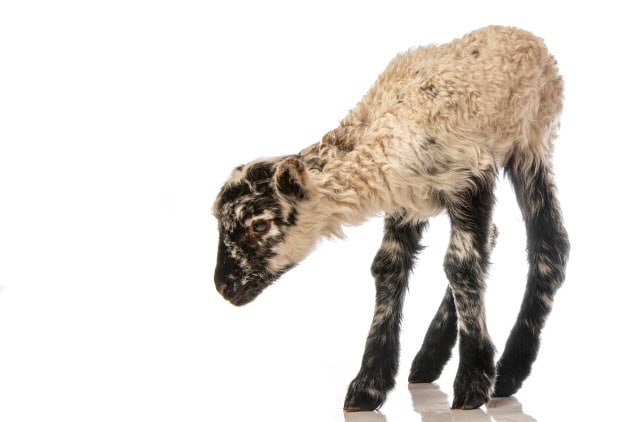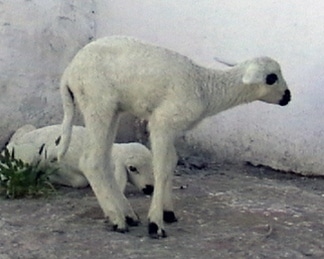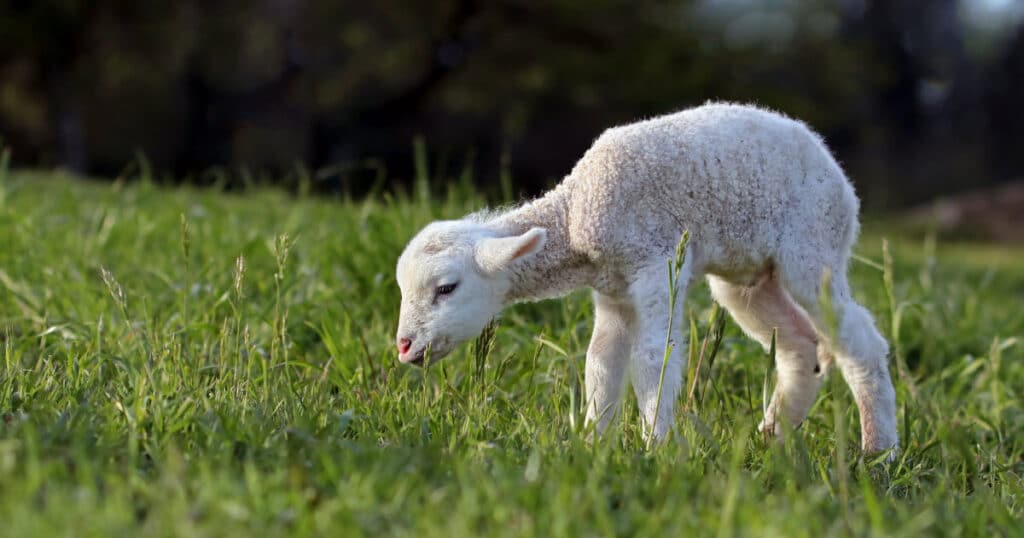White muscle disease in sheep (also referred to as WMD or stiff lamb disease) is a degenerative muscle disease which is common in all large animals. It is most commonly observed in newborn lambs who have difficulty moving and is caused by a deficiency in Vitamin E or Selenium. If left untreated it can be deadly as lambs will be unable to move and get to their source of food.
What Causes White Muscle Disease in Sheep?
Selenium or Vitamin E deficiency – the cause of white muscle disease in sheep and other animals – is usually the result of grazing on nutrient-depleted soils. Some regions of the country and parts of the world are especially prone to this, including the Northeastern United States.
This deficiency isn’t so much related to soil type as it is to forage quality. Sheep prefer to eat leguminous plants like clover, alfalfa and vetch – all of which are rich in Selenium (Se) – but if this mineral isn’t available in adequate quantities in the hay and grain you feed your pregnant ewes, your lambs can be born with the deficiency.
White muscle disease is most commonly observed in newborn lambs, which has earned it the name “stiff lamb disease.”
How to Diagnose Selenium Deficiency in Sheep
All breeds of sheep can be diagnosed with white muscle disease. The disease can have an effect on either the cardiac or skeletal muscles of lambs.

Symptoms are most likely to be observed in newborns or fast-growing lambs. Large lambs have rapid development which can outpace the supply of vitamin E or Selenium.
Symptoms of WMD vary depending upon the type of muscles affected:
- Skeletal Muscles
- Cardiac Muscles
Symptoms of Skeletal White Muscle Disease in Lambs
Diagnosing white muscle disease in lambs often comes when you observe lambs who have difficulty moving. This is especially true when they first stand. Lambs may also display obvious pain when they walk or simply cannot (or do not) move.
The most common posture displayed by these lambs is an arched back and uncomfortable appearance.

These lambs will often remain otherwise bright, cheerful and interested in food but eventually they will become too weak to nurse.
Symptoms are often obvious within the first 24 hours for newborn lambs and sudden exercise can trigger symptoms in older, fast-growing lambs.
Symptoms of Cardiac White Muscle Disease in Lambs
Lambs affected by cardiac white muscle disease typically have alarming symptoms. When WMD affects the heart lambs will display symptoms which may resemble pneumonia. You’ll observe difficulty breathing and frothy nasal discharge (which may include blood). Breathing and heart rates will often remain elevated for extended periods of time.
If a lamb is experiencing symptoms of cardiac white muscle disease, the lamb’s skeletal muscles will typically be affected as well.
Treatments for White Muscle Disease in Your Sheep
Treatment of lambs whose heart is affected by white muscle disease is often ineffective. Even if the lambs do survive they will likely never develop and thrive the way they otherwise might due to permanent damage to their cardiac tissue.
You can successfully treat skeletal white muscle disease (more common). By administering injections of Selenium/Vitamin E or administering a rapidly digested gel or paste (there’s a link to one below) your lamb can survive and thrive.
When giving your lambs an injection be sure to follow recommended dosages. The concentration of the mineral in different bottles of the product often vary. Repeated or large injections can result in Selenium toxicity and death.
One properly dosed shot shouldn’t have any negative effect on a lamb (even a healthy lamb). This is why some shepherds who have observed symptoms of white muscle disease in their flock in the past will administer all newborn lambs a small dose of Vitamin E during the first 24 hours as a precautionary measure.
An alternative to help avoid the problem altogether is to buy a quality mineral supplement which your sheep enjoy. Choose one which includes plenty of Selenium. This is often enough to supplement your ewe’s diet and avoid white muscle disease in sheep.
Recommended Treatment:


